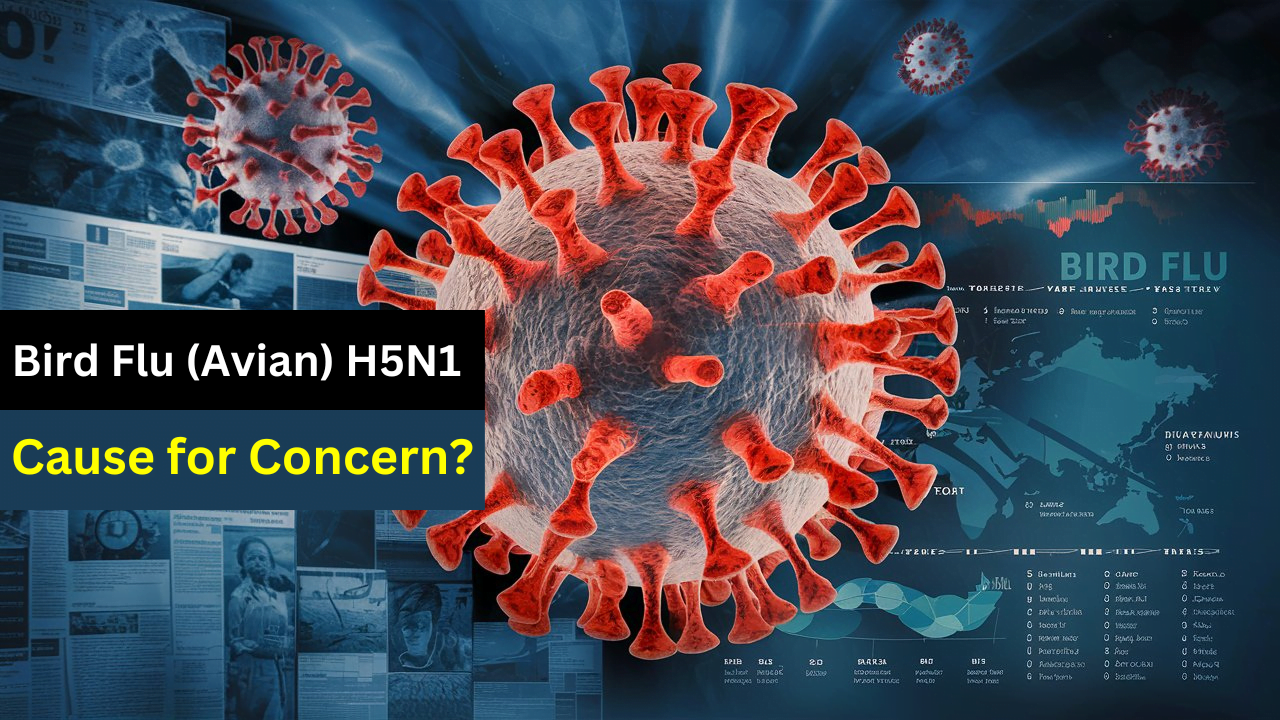
Over the past few years, there have been concerns about the H5N1 avian influenza virus which has caused a lot of discussions on its origin, spreading, and potential to cause a global pandemic. It was first recognized in 1996 hence it has a background with H5N1 since then, the viruses underwent significant mutations and spread across various continents thereby posing threats not only to bird populations but raising concerns about animals such as humans. This is an all-rounded article that will look at various aspects of the H5N1 virus including its origins, patterns of spread, and possible risks to animal and human populations.
Origins and Early Cases
The outbreak of H5N1 can be traced back to 1996 when it was initially discovered. However, it was in 1997 when there were poultry outbreaks reported in China and Hong Kong that the disease gained considerable attention globally. It became alarming when 18 cases with six deaths were observed among the human population in Hong Kong. The fatality rate among these initial human cases was approximately 33%, thus indicating the fact that this virus may cause severe illness in humans.
Spread and Evolution
After the initial outbreaks in 1997, H5N1 stayed quiet for a few years before reappearing with new strains and genetic variations. It resurfaced in China and neighboring countries in 2003 and 2005, causing massive poultry epidemics. Significantly, it was wild birds that enabled its spread across continents so that by 2005 it reached Africa, the Middle East, and Europe. The virus later divided into numerous genetic lineages resulting to the emergence of different subvariants and clades over time.
By the end of the year 2021, a new strain of H5N1 had emerged as dominant in Asia, Africa, Europe, and the Middle East under clade 2.3.4.4B. This new variant posed serious challenges especially when migratory birds carried it to North America leading to outbreaks in Canada and the United States by February 2022. Despite attempts made towards containing this disease within poultry populations, however, it rapidly disseminated generating concerns about possible human health effects from such forms of flu viruses.
Spread to Mammals
A critical question concerning H5N1 is whether it can move from birds into mammals, including humans. Minks, seals, and other wild animals have been reported with H5N1 infections over the past few years. In Spain, there was an outbreak in mink farms prompting the killing of thousands of mink to limit its spread. The general analysis showed that there was a mutation in the pb2 gene as happened during the 2009 swine flu pandemic hence raising fear of mammalian-to-mammal infection.
Additionally, H5N1 had also infected seals in Maine. Genetic analysis indicated different viral genetic variations between avian and seal hosts. This further supports the potentiality for mammal-to-mammal transmission as mentioned above regarding pb2 changes detected in sequences derived from seals. These incidents also show that the virus can infect mammals but no human transmissions have been reported among infected mammals which gives a little bit of confidence against zoonotic transmission concerns.
Human Cases and Severity
In terms of cases involving humans, 868 human H5N1 infections have been reported since 1996 with a frightening death toll exceeding 50 percent. Nevertheless, most of these cases were before the current clade 2.3.4.4B emerged. Only two people have caught the disease in the past year: one in Colorado and another one in Ecuador. Despite a few recent cases, there are still concerns about how severe H5N1 can be when it infects humans who appear to have symptoms much like those of normal flu but which may cause serious complications.
Risks of Global Pandemic
Whether or not H5NI will become a global pandemic is always a subject of speculation and worry. Although this virus has been around for more than three decades its ability for human-to-human transmission so far has been limited. However, increased numbers of bird and mammal infections alongside genetic alterations seen in the virus calls for heightened possibilities of transmission rates rising above average levels.
Several factors may influence the likelihood of H5N1 causing a pandemic. This is because the propensity for mutation and adaption that the virus has exhibited, as well as its ability to infect various mammalian species including humans, warrants ongoing rigorous surveillance and containment measures. Despite their effectiveness in reducing disease severity of H5N1 infection, antiviral drugs like Tamiflu lack vaccines which could help reduce transmission.
Conclusion
In conclusion, there are complex issues and uncertainties that arise when contemplating whether H5N1 avian influenza could cause a global pandemic. While much progress has been made toward understanding the origins, patterns of spread, and potential risks of Avian Influenza A (H5N1), there are still many gaps in knowledge about the disease itself. Ongoing research activities, active surveillance systems, and preparedness plans are necessary both to minimize the H5N1 threat to animal health and also to protect human beings from it. To mitigate against this evolving threat if found in birds such that they become susceptible to catching it while minimizing chances of outbreak leading into an epidemic at least calls for vigilance at the local national or even international level thereby making it part of bird flu prevention strategies where there is too often an emphasis on how this disease can be treated rather than focusing on prevention which remains best cure for now.




